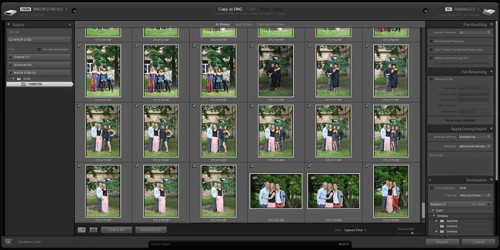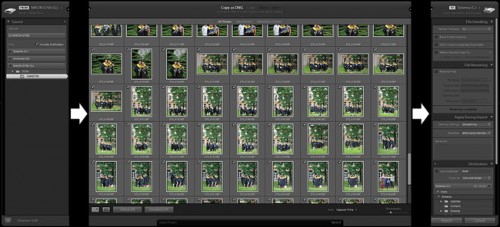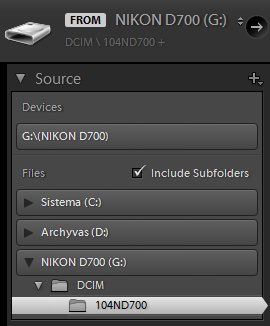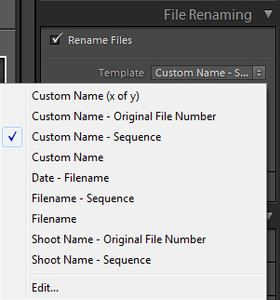How to Import Photographs in Lightroom
In our previous Mastering Lightroom series articles we covered what Lightroom is and how it works. We also took a quick tour around Lightroom’s working environment. After highlighting the basic function and capability of each Module, it is now time to talk about them individually more in-depth, starting with Library Module. Before we can actually start using all Library tools, however, we need images to work with. That is why our first step is to learn how to import photographs in Lightroom. I will be using the latest (at the time of writing) version, Lightroom 5, to guide you through the process of Importing images. Virtually everything but Smart Previews is equally applicable to earlier releases.

Lightroom is a catalog-based photo manager and post-processing tool. That means in order to start working with photographs, you need to first Import them into your Catalog. Importing is a very simple, straightforward process done using the Import window. To start the process of Importing photographs, launch Lightroom and then click “Import…” at the bottom of the left-side panel in Library Module. Alternatively, you can Import photographs by selecting “Import Photos and Video…” from File menu (Ctrl+Shift+I for Windows users). This will open the Import window for you to choose source directory, image files, destination and other details.
A side note: by default, Lightroom should automatically launch and ready itself for immediate Import as soon as you connect an external storage device to your computer, such as a camera or memory card. If it does not or should you want to change this behavior, go to “Preferences…” in “Edit” menu and check or uncheck the “Show import dialog when a memory card is detected” box in the General tab. I find this a particularly useful option, yet nonetheless disabled it immediately after installing Lightroom on my computer due to a simple irritation. Lightroom would launch its Import dialogue even if I connect a simple USB flash drive which I use for general files and documents, not photographs I need in my Catalog.
1) Import Window Structure
Lightroom’s Import window consists of three main sections, as shown in the screenshot below. These three sections clearly mark sequence of actions you need to take to successfully Import photographs into your Catalog.
First of all, you will need to select the source to Import image files from. Once you do that, choose which images to Import from the middle section of the window. Lightroom will generate thumbnail previews for both JPEG and RAW image files. Finally, specify additional information in the right-most section of the window. The tabs that will be available here depend on what settings you choose in the two previous steps. In all cases, you will have File Handling and Apply During Import tabs available.

If you tend to Import photographs straight from memory card after a shoot and rarely, if ever, need to select specific images manually, you can have Lightroom show much simpler Import dialogue. To do that, either hit the arrow button at the bottom-left of the screen or Tab key on your keyboard.
2) Choose Source to Import From

If there are no external devices to Import from, navigate to the source directory manually. In this case, you will have a “Include Subfolders” check box ready. Enabling this setting will display all images in selected folder and those in folders inside it if any are present.
3) Choose Image Files to Import
The second step is as simple as the first one – now that you have shown Lightroom where your images reside, choose which ones you want in your Catalog. Lightroom will automatically grey-out photographs that are already imported provided they are named identically. In such a case you don’t need to worry about duplicates sneaking in. At the bottom of the central section you will find the usual and straightforward controls, such as “Check All” or “Uncheck All”. Hold down Alt key to toggle “Check Videos” and “Uncheck Videos” options instead. There are also sorting options. Adjust thumbnail size if you’d like bigger previews as you select specific images to Import. Do note Lightroom will not render these in high quality. You can preview images in Loupe view (magnified view when only one image is shown) by double-clicking on them or hitting “E” key. Hit “G” to get back to Grid view or double-click again.
4) Choose to Copy as DNG, Copy, Move or Add Image Files
Located at the top of central section, these options allow you to specify the method of Import. Some adjustments in the last section depend on which setting you choose here.
Copy as DNG – image files will be copied from source directory to a specified location in Adobe’s universal DNG format. Read our “DNG vs RAW” article to learn more about DNG file format.
Copy – image files will be copied from source directory to a specified location in original file format.
Move – image files will be moved from source directory to a specified location in original file format. This option is unavailable when Importing from a memory card, for example.
Add – files will not be copied or moved to a new location. Instead, Lightroom will simply add them to your working Catalog. This option is also unavailable when Importing from a memory card or USB flash drive.
5) Choose Destination to Copy Files to, File Handling Options and Metadata Settings
This last section of the Import dialogue is the last step you need to take to Import files and also one you’ll spend most time in. Let’s break it down and briefly discuss each tab.
5.1) File Handling
Render Previews – specify quality in which Lightroom should render previews for images you are Importing. Choosing Minimal will use smallest previews that are already embedded into the files by your camera. This is the quickest option and will take up the least disk space. Lightroom will render Standard previews when needed (when in Loupe view mode). This will slow down operational speed somewhat at first when working with images.
Choose Embedded&Sidecar option to have Lightroom use highest quality embedded previews. A slightly slower process, it will also take a little bit more space on your hard drive. Again, Lightroom will render Standard previews when needed. This process will have an impact on operational speed at first.
Render Standard previews to avoid slow-downs in Loupe view Fit zoom level. Instead of using embedded previews, Lightroom will render Standard size on its own. This process takes longer than the two previous options, but makes working with images swifter. You can fine-tune Standard preview quality by selecting “Catalog Settings…” from the “Edit” menu (hit Ctrl+Alt+,). Standard preview settings are found in the “File Handling” tab.
1:1 previews are full-size images. They are used when zoomed in to larger magnifications, such as 100%. Rendering 1:1 previews takes the most time after the Import process is over and most disk space. However, it makes working with images even faster when done (you won’t have to wait for Lightroom to render 1:1 previews when zooming in individual images as you would with any of the other options selected). I would recommend you use this setting if you plan to post-process your images.
Build Smart Previews – this check box is only available starting Lightroom version 5. Smart Previews are especially useful if you prefer to keep your weighty RAW files on an external drive. If you check the “Build Smart Previews” check box as you import your images, Lightroom will allow you to post-process the photographs in any way you like even if they are not directly accessible at the time. More than that, you will even be able to export them up to about 2540px (long edge), which is great for web sharing. Understandably, Smart Previews take up some disk space. They are stored along with your Catalog files.
Don’t Import Suspected Duplicates – if you select this option, Lightroom will attempt to avoid duplicates on Import should they be present among selected files.
Make a Second Copy To – very useful if you tend back up your image files to another location. Lightroom will copy all image files you selected for Import to a specified location. This option is only available if you chose Copy as DNG, Copy or Move Import methods and doesn’t work with Add.
5.2) File Renaming

Creating your own template is very simple. Lightroom offers a huge amount of options for you to include. To create your own template, click on the drop-down list of available templates and choose “Edit…”. Filename Template Editor will pop-up – an extremely flexible tool you will use to create your own naming template. As soon as you’re done customizing your preset, use the Preset drop-down menu at the top of the Filename Template Editor dialogue and select “Save Current Settings as New Preset” to save and use the template.
To learn more about filename presets, read our “Using Filename Template Editor in Lightroom” article.
5.3) Apply During Import
Yet another set of important options you will definitely want to fill in.
Develop Settings – allows you to apply a Develop Preset on images as soon as they become available in your Library. It’s great at giving you an approximate look of your final result rather than the flat RAW image rendering. Because you can only apply a single Develop Preset on Import, this setting works best with B&W conversion, color adjustment and tone adjustment Presets. Naturally, you can set it to a Sharpening or Noise Reduction Preset if you have those. The latter will give you a pretty good idea on which images came out too grainy for your taste.
Read more about Develop Presets in our “How to Manage Presets” article.
Metadata – specify metadata preset to apply. You can easily edit or create new presets by choosing corresponding options from the drop-down menu. Managing metadata presets will be covered in a separate article.
Keywords – specify keywords that suit all the images you are about to Import, such as event name. They are very useful when searching for specific photographs in Lightroom or sorting them. Do not apply keywords that are only appropriate for some of the photographs. For example, if you have both portraits and landscapes selected, it is better to add “Portrait” and “Landscape” keywords to these images separately in the Library Module after the Import. All of the keywords can be edited at any time after the Import.
5.4) Destination
Setting destination is only available if you chose to Copy/Copy as DNG or Move files on Import. You can specify a subfolder name and have Lightroom Import images into separate folders for you rather than a single one (based on date, for example).
6) Create an Import Preset
There you go! You can now go ahead and click “Import” – all selected images will appear in your Library Module and have the keywords and metadata entries attached to them. However, in case you find yourself setting up Import dialogue the same way on a regular basis, you can also save these settings as an Import Preset. To do that, use the Import Preset tool located at the very bottom of the Import window.




.gif)





